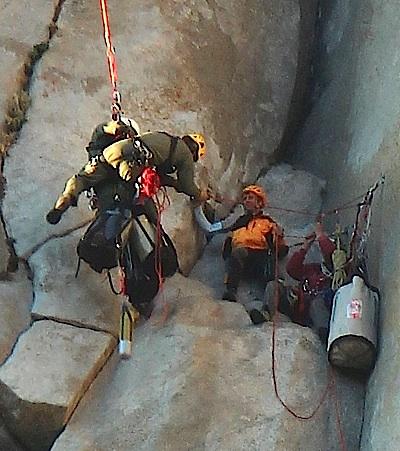
Be careful in the parks this summer, don't turn into a SAR Mission/NPS
While the number of search-and-rescue missions conducted in the National Park System in 2013 dropped slightly from the previous year, the number of individuals never found jumped fourfold, to 56, according to the National Park Service's annual Search and Rescue Report.
The 2,348 SARs conducted last year marked a decrease of 528 from 2012, and the agency costs shrank, too, from nearly $5.2 million in 2012 to roughly $3.8 million.
The cause of most visitors needing help from rangers? Far and away "fatigue and physical condition" was cited most, with that listed behind 703 of the missions. For 516 incidents, the visitors made an error in judgment or had insufficent information for their trip. There were 148 fatalities cited in the 2013 report, five more than in 2012. Park Service officials could not immediately say whether that was a coincidence or error.
Somewhat interesting was the notation that personal locator beacons were the source used to request aid in just 47 cases, while satellite phones were used in 101 incidents to summon help, with cellphones used in 858 of the cases.
As was the case in 2012, weekends proved the most dangerous in 2013, no doubt in large part to Saturdays and Sundays luring more visitors into the parks than any other day of the week. Of the 2,348 SAR missions, 433 were launched on a Saturday, with 370 begun on a Sunday. Fridays accounted for 301 missions.
Which activity is most likely to lead to a SAR? Day-hiking. That form of recreation in the parks led to 1,379 SARs, which involved 588 injuries and 27 fatalities. Backpacking produced 490 SARs, involved 238 injuries, and 10 fatalities. Even fishing can be dangerous if you're not careful, as there were 40 SARs tied to that activity with two injuries and six deaths reported.
Among the report's details:
* Far and away (92 percent), most individuals were found within 24 hours of being reported lost.
* In 19 cases, it took more than a week to find the individual(s).
* 374 of those reported missing did what you should do -- stay put.
* The Pacific West Region conducted the most SARs in 2013, with 737 logged, while the Intermountain Region counted 726 missions. The National Capital Region had just 27.
* In 677 (20 percent) of the missions, the individuals needing help were between the age of 20 and 29.
* Of the roughly $3.8 million spent on SARs in 2013 by the Park Service, $1.9 million went to personnel, $1.5 million to aircraft, $110,378 to vessels, and $298,714 to supplies.
The Park Service does not typically charge for SARs, though it can bill individuals if their recklessness gets them in trouble.
Among last year's SARs?
* Canyoneering accidents at Zion National Park in Utah.
* A teenager falling into a steam vent (and surviving!) at Hawaii Volcanoes National Park in Hawaii.
* A bare-footed day-hiker at White Sands National Monument in New Mexico.
* A missing hiker at Craters of the Moon National Monument and Preserve in Idaho.
* A climbing accident at Grand Teton National Park in Wyoming.
* A missing man at Shenandoah National Park in Virginia.
* A hiker injured during a storm event at Great Smoky Mountains National Park in North Carolina/Tennessee.

 Support Essential Coverage of Essential Places
Support Essential Coverage of Essential Places







Comments
Ahh probably not, because they probably have alternate routes, or they book during the day it becomes available. I know that I can't book in advance and have to wait until it becomes available, and i'm subject to the fee, and closures, and rules just like everyone else. Just because they book some trips a few months in advance through their business doesn't mean anything. October the AT isn't that booked either, because cold snaps and weather under 32 degrees start to occur, and that keeps people away. I went up to Spence Field/Rocky Top last year in the middle of october during the first major cold snap, and I had the shelter to myself that night. From the permitting system, 3 days this month, tricorner knob is booked out, with a few days down to 1 slot left. Are you sure it's so inaccessible? That's what you said. The NPS has locked everyone out, that only 28 days of the 31 are available for people to book a slot in many of the shelters. Pecks Corner has five days booked out this month, which was more than the 2 booked out at Ice Water and Mt Collins. I bet Lamar Alexander is up to no good again!! 5 days of out of 31 are already off limits at Pecks! That's tyranny I tell you...Pure shenanigans!
https://smokiespermits.nps.gov